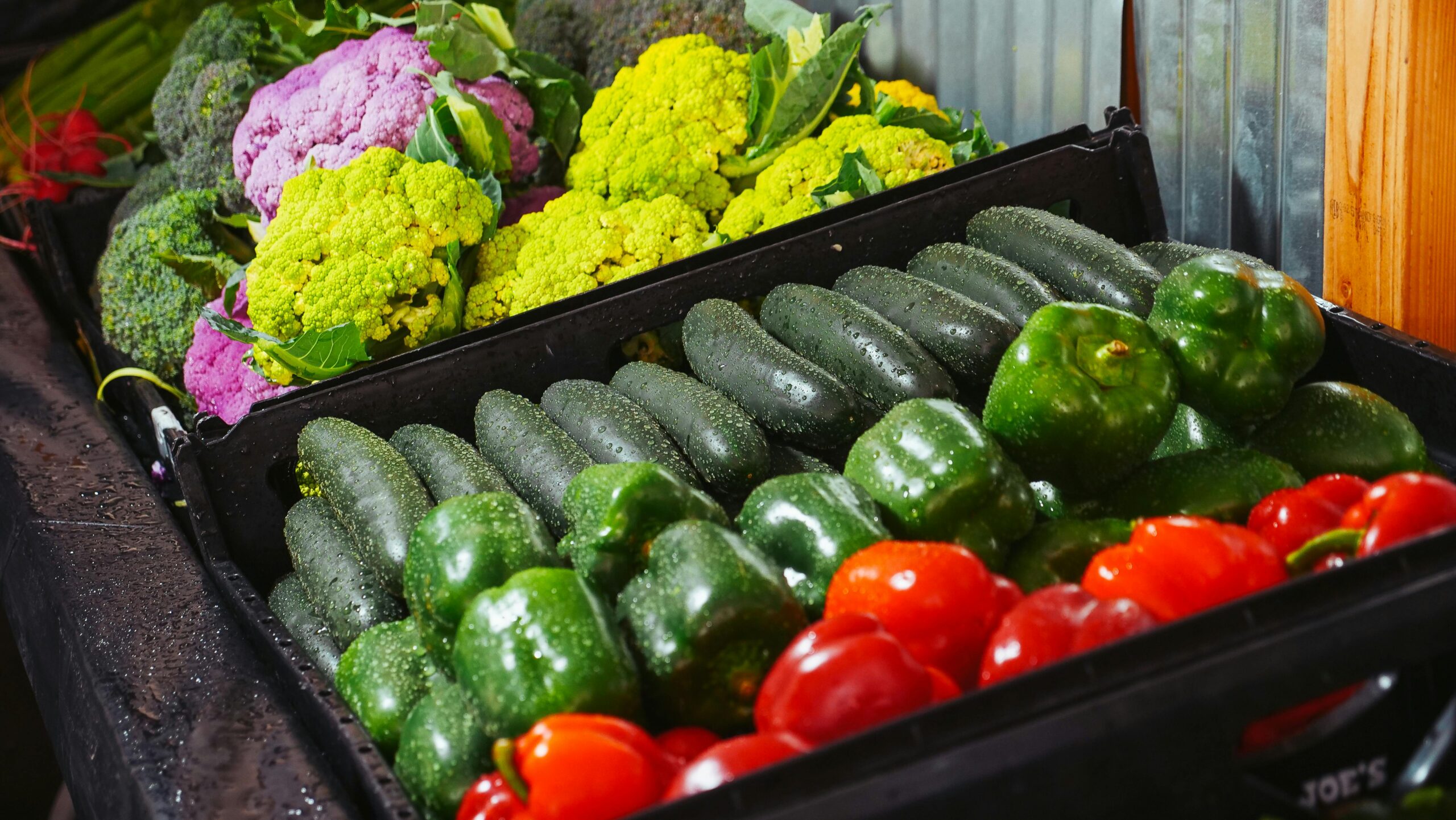Are you an agricultural business owner looking to maximize your crop sales? Effective marketing strategies can make all the difference in a highly competitive industry. In this blog article, we’ll explore various approaches to agricultural marketing that can help you reach a wider audience and increase your profits. From leveraging digital platforms to establishing strong partnerships, we’ll dive into the key tactics that can drive success in the agricultural market. Whether you’re a small-scale farmer or a large-scale agricultural producer, read on to discover valuable insights that will help you thrive in the ever-evolving world of agricultural marketing.
Section 1: Understanding the Agricultural Market Landscape
Before diving into effective marketing strategies, it’s crucial to have a deep understanding of the agricultural market landscape. This includes staying updated on industry trends, market demands, and consumer preferences. Here are some key areas to focus on:
1. Identifying Target Audience
Define your target audience by considering factors such as age, location, income level, and specific agricultural needs. Understanding your audience will help you tailor your marketing efforts to their preferences and create more targeted campaigns.
2. Analyzing Competitors
Conduct thorough research on your competitors to identify their strengths, weaknesses, and unique selling propositions. This analysis will enable you to differentiate your products or services and develop competitive marketing strategies.
3. Studying Market Trends
Stay updated on the latest market trends, including shifts in consumer preferences, emerging technologies, and regulatory changes. This knowledge will help you identify new opportunities and adapt your marketing strategies accordingly.
4. Assessing Demand and Supply
Understand the demand and supply dynamics of the agricultural market. Analyze factors such as seasonality, pricing fluctuations, and potential risks that may impact the availability and pricing of your products. This information will help you make informed marketing decisions.
By gaining a comprehensive understanding of the agricultural market landscape, you can lay a solid foundation for your marketing strategies, ensuring they align with the needs and preferences of your target audience.
Section 2: Developing a Strong Online Presence
In today’s digital age, establishing a strong online presence is essential for successful agricultural marketing. Here are key strategies to help you boost your visibility and attract potential customers:
1. Build a Professional Website
Create a user-friendly website that showcases your agricultural products or services. Ensure your website is mobile-responsive, loads quickly, and provides valuable information to visitors. Include clear contact information and an easy-to-use navigation menu for a seamless user experience.
2. Optimize Your Website for Search Engines
Implement search engine optimization (SEO) techniques to improve your website’s visibility in search engine results. Research and incorporate relevant keywords into your website’s content, meta tags, and headers. This will help potential customers find your website when searching for agricultural products or services.
3. Leverage Social Media Platforms
Create business profiles on popular social media platforms such as Facebook, Twitter, and Instagram. Regularly post engaging content, including product updates, industry news, and helpful tips. Engage with your audience by responding to comments and messages promptly.
4. Share Compelling Content
Produce high-quality content such as blog articles, videos, and infographics related to the agricultural industry. Share this content on your website and social media platforms to position yourself as an industry expert and attract potential customers.
5. Invest in Online Advertising
Consider online advertising options such as pay-per-click (PPC) campaigns or display ads to increase your online visibility. Target your ads to specific geographic locations or demographics to reach your ideal customers effectively.
By developing a strong online presence, you can expand your reach, engage with your target audience, and ultimately drive more sales for your agricultural business.
Section 3: Building Strong Partnerships and Networks
Building strong partnerships and networks is a valuable strategy for agricultural marketing. Collaborating with industry stakeholders can help you expand your reach, access new markets, and enhance your brand reputation. Here are some approaches to consider:
1. Collaborate with Local Farmers and Suppliers
Form partnerships with local farmers and suppliers to create a network that benefits all parties involved. This can include joint marketing initiatives, cooperative purchasing, or sharing distribution channels. By working together, you can leverage each other’s strengths and tap into new customer bases.
2. Establish Relationships with Retailers and Distributors
Develop strong relationships with retailers and distributors who specialize in agricultural products. Provide them with comprehensive product information, samples, and attractive pricing to encourage them to promote and sell your products. Regularly communicate and collaborate with these partners to stay informed about market demands and adjust your marketing strategies accordingly.
3. Participate in Industry Events and Trade Shows
Attend agricultural trade shows, conferences, and industry events to network with potential customers, suppliers, and industry experts. Set up an engaging booth or exhibition to showcase your products and services. Take advantage of these events to learn about market trends, gather feedback, and establish valuable connections.
4. Engage in Community Outreach
Show your commitment to the community by engaging in local outreach initiatives. Sponsor local events, participate in agricultural fairs, or offer educational workshops to build trust and credibility. Engaging with the community not only enhances your brand image but also creates opportunities for word-of-mouth marketing.
5. Join Agricultural Associations and Organizations
Become a member of relevant agricultural associations or organizations to access a network of industry professionals and stay updated on industry developments. Participate in their events, contribute to their publications, and collaborate on research projects to enhance your visibility and credibility in the agricultural community.
By building strong partnerships and networks, you can expand your market reach, gain valuable insights, and establish a reputable presence in the agricultural industry.
Section 4: Harnessing the Power of Content Marketing
Content marketing is a powerful strategy for agricultural businesses to establish thought leadership, build trust, and attract potential customers. By creating and sharing valuable content, you can effectively engage with your target audience. Here are key aspects to consider:
1. Develop a Content Strategy
Create a content strategy that aligns with your marketing goals and target audience. Identify the topics, formats, and platforms that will resonate with your audience. Plan a content calendar to ensure consistency and regularity in your content production and distribution.
2. Produce Educational and Informative Content
Create content that educates and informs your audience about agriculture-related topics. This can include blog articles, how-to guides, case studies, or informative videos. Focus on providing valuable insights and practical tips that solve your audience’s problems or address their pain points.
3. Optimize Content for Search Engines
Incorporate relevant keywords and optimize your content for search engines. This will help your content rank higher in search engine results, making it more discoverable to potential customers. Use descriptive titles, headers, and meta descriptions to enhance the visibility and click-through rate of your content.
4. Leverage Visual Content
Utilize visual content such as infographics, images, and videos to make your content more engaging and shareable. Visuals can help simplify complex information and capture the attention of your audience. Ensure your visual content is well-designed, visually appealing, and relevant to your agricultural niche.
5. Promote and Share Your Content
Actively promote and share your content through various channels, such as social media, email newsletters, and industry forums. Engage with your audience by responding to comments, encouraging discussions, and sharing your content in relevant online communities. This will help increase the visibility and reach of your content.
By harnessing the power of content marketing, you can position yourself as an industry expert, build trust with your audience, and ultimately drive organic traffic and customer engagement for your agricultural business.
Section 5: Monitoring and Evaluating Your Marketing Efforts
Monitoring and evaluating your agricultural marketing efforts is crucial to determine the effectiveness of your strategies and make data-driven decisions. Here’s how you can effectively track and assess your marketing performance:
1. Set Measurable Goals
Establish specific, measurable, achievable, relevant, and time-bound (SMART) goals for your marketing campaigns. These goals could include increasing website traffic, generating leads, or improving conversion rates. Clear goals will help you track progress and measure success.
2. Utilize Web Analytics Tools
Implement web analytics tools like Google Analytics to gather valuable insights about your website’s performance. Track metrics such as page views, bounce rates, conversion rates, and user demographics. Analyzing this data will help you identify areas for improvement and optimize your marketing strategies.
3. Monitor Social Media Engagement
Regularly monitor your social media engagement metrics, including likes, comments, shares, and click-through rates. Analyze which types of content resonate most with your audience and adjust your social media marketing efforts accordingly.
4. Collect Customer Feedback
Collect feedback from your customers through surveys, reviews, or direct communication. Understand their satisfaction levels, preferences, and suggestions for improvement. This feedback will help you refine your marketing strategies and enhance the overall customer experience.
5. Analyze Sales and Revenue Data
Track and analyze sales and revenue data to evaluate the impact of your marketing efforts on your bottom line. Identify which marketing channels or campaigns are driving the most conversions and revenue. This information will enable you to allocate resources effectively and optimize your marketing budget.
By monitoring and evaluating your marketing efforts, you can identify areas of success and improvement, make data-informed decisions, and continuously optimize your agricultural marketing strategies for greater effectiveness and impact.
In conclusion, effective agricultural marketing is essential for maximizing crop sales and staying competitive in the industry. By understanding the agricultural market landscape, developing a strong online presence, building strategic partnerships, harnessing the power of content marketing, and monitoring your marketing efforts, you can effectively reach your target audience and drive business growth.
Keep in mind that agricultural marketing is an ongoing process that requires continuous adaptation and improvement. Stay updated on industry trends, listen to customer feedback, and leverage data analytics to make informed decisions. Remember to prioritize providing value to your customers, whether through educational content, personalized experiences, or reliable products.
Implementing these strategies and embracing a customer-centric approach will not only help you succeed in agricultural marketing but also build long-lasting relationships with your customers. So, take the time to plan your marketing initiatives, execute them diligently, and consistently evaluate and optimize your efforts for optimal results.
By following these tips and staying committed to your marketing goals, you can position your agricultural business for success in the ever-evolving marketplace.

